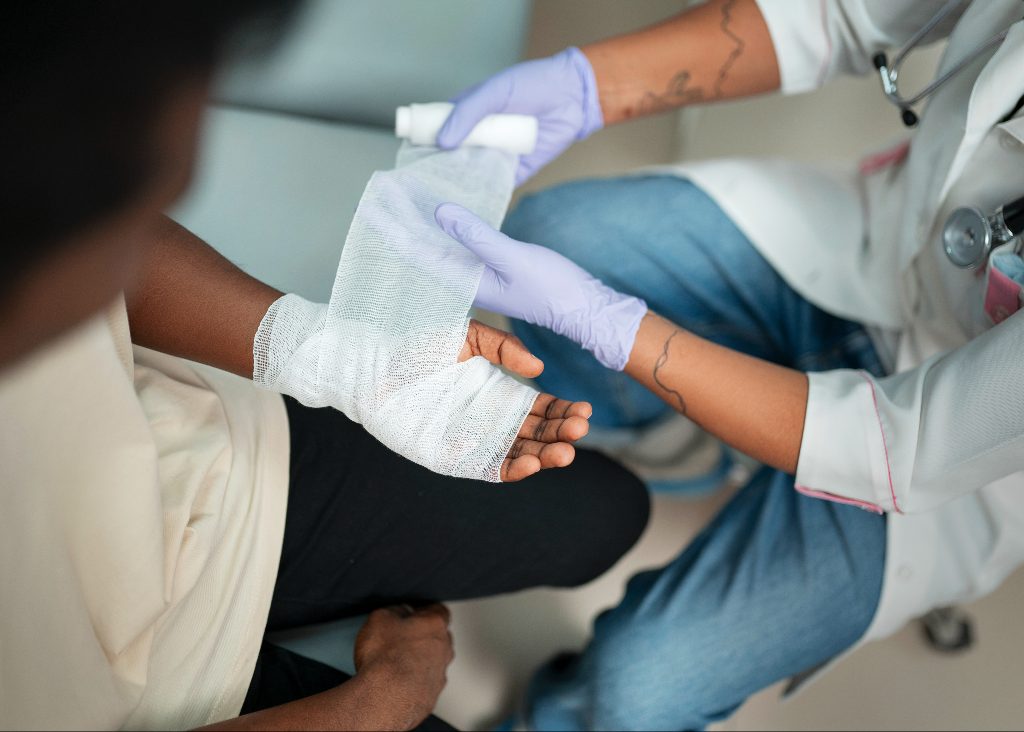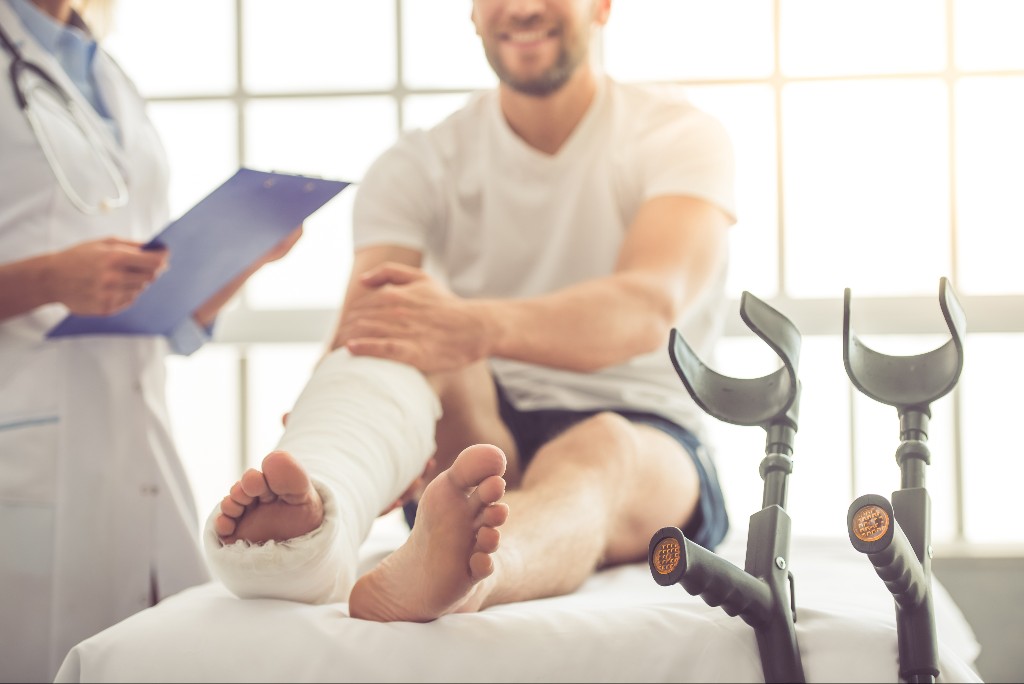If you recently suffered a hand or wrist injury, then you understand how much of an impact that can have on your day-to-day life. Pain, inflammation, and issues that affect mobility in your hands and wrists can keep you from performing the most basic of tasks throughout your day, like brushing your teeth, typing at your computer, or driving your car. Injuries or health conditions that affect your dominant hand can significantly impact your fine motor skills and the muscles that support your non-dominant hand are often weaker. People who have recently suffered car accident injuries that impact the hands and wrists will visit their doctor to seek pain relief and a proper diagnosis and treatment plan. While carpal tunnel syndrome and trigger finger are more commonly associated with hand and wrist injuries due to a recent trauma or repetitive movements and overuse, you might also be dealing with a condition known as carpal boss.
What Is Carpal Boss?
You might be wondering, “what exactly is carpal boss?” If you notice a small bump that develops on the back of your hand near the bend in your wrist that doesn’t move, then you may have what is known as carpometacarpal boss, typically shortened to carpal boss. This condition refers to an overgrowth of bone in your wrist that may not bother you but can become problematic if you start to experience pain, swelling, or other uncomfortable symptoms. This bony lump can develop where the index and middle fingers connect to the bones that make up your wrist, known as the carpal bones. The overgrowth of bone turns into a mass that can cause pain, inflammation, and even restrict your mobility and cause further complications.
Anatomy of the Hand and Wrist
The wrist joint is comprised of eight small bones that come together and are referred to as the carpal bones. The fingers in your hand, known as metacarpal bones, connect to the carpal bones at the base of your hand and wrist. The bones that make up your fingers actually extend into the palm of your hand, and there are 5 metacarpal bones in your palm. A carpal boss can develop where the metacarpal of one of your fingers connects with the carpal bones of your wrist. While the carpal boss can develop where any of the 5 metacarpal bones meet the carpal bones, it is most common at the base of your index or middle fingers. The carpal boss is typically rounded in shape and does not move around because it is an overgrowth of bone in that area.
Causes of Carpal Boss
Carpal boss is not as common as other hand and wrist injuries, nor does it have an obvious exact cause. In fact, there are a few different things that can cause carpal boss. Here are some examples of what has caused carpal boss:
Traumatic Injury
A traumatic injury to your hand or wrist may trigger the development of carpal boss. An example of traumatic injuries that can affect your hands and wrists includes car accident injuries. It is possible to injure your hands and wrists while holding the steering wheel or bracing for impact during an auto collision. The force of impact when another car hits yours can also jolt and jostle you around, stressing and straining the wrist joint and the structures in your hand. A broken wrist or fracturing of one of the many bones that make up your hand may also lead to further damage in this area.
Overuse Injury
Common overuse injuries that impact the hands and wrists include carpal tunnel syndrome and trigger finger. These types of injuries can develop due to overuse, meaning you engage in movements and activities that put significant stress and strain on the bones, muscles, tendons, and ligaments that make up your wrists and hands. Overuse injuries can also cause nerve pain and nerve damage. An overuse injury can aggravate the structures in your hand and wrist, leading to the development of carpal boss.
Repetitive Motions
If you participate in repetitive motions due to your job or an activity you enjoy, then you may put a lot of stress and strain on your hand and wrist. Even if you don’t suffer an injury, these repetitive motions, like from playing racket sports or working with your hands while on the job, can aggravate soft tissues in the hands and wrists, causing swelling and inflammation.
Congenital Conditions
The most common example of a congenital condition that could lead to carpal boss is if you have bone spurs. It is possible to develop bone spurs in utero, meaning these bone growths could have developed before you were even born. Bone spurs are different from carpal boss, though it is possible to have both a bone spur and carpal boss in the same area.
Symptoms of Carpal Boss
The first sign that you might be dealing with carpal boss is if you notice a firm lump start to develop along the back of your hand. Some people don’t experience any other physical symptoms when carpal boss develops. Other people may start to experience pain in the area because the overgrowth of bone is aggravating nearby soft tissues and other bones. The mass on the back of your wrist known as carpal boss may feel tender to the touch and may feel painful with certain hand and wrist movements. Some people also report increased pain and discomfort when the tendons in your hands move over the bump of the carpal boss. Swelling and inflammation in the area can also occur.
How Carpal Boss Is Diagnosed
Carpal boss is less common than other hand and wrist conditions, so your doctor will likely also want to rule out other conditions with similar symptoms. For example, your doctor will want to confirm that you are not experiencing the symptoms of bursitis, osteoarthritis, or issues with the tendons in your hands and wrists. These conditions can also cause pain that increases with wrist movements. In order to effectively diagnose carpal boss, your doctor will want to discuss your symptoms and ask you some questions. Here are common questions your doctor may ask to help inform whether you have carpal boss:
- When did you first notice the bony lump on the back of your hand?
- What symptoms have you been experiencing?
- Do your symptoms get worse with any specific movements?
- How might your symptoms affect your daily routines and activities?
Your doctor will also want to perform a physical examination of the affected hand and wrist. They will also want to feel the bony lump on the back of your hand to check for tenderness and determine whether it is hard or soft. If the lump is hard, then it can help to rule out another possible diagnosis of a cyst impacting the area. In some cases, your doctor may want to run diagnostic imaging tests to get a better look at the affected hand and wrist. For example, your doctor may want to run a CT scan to diagnose carpal boss because it will show detailed images of the bones in your hands and wrists, along with soft tissues like muscles and tendons, as well as cartilage and any bone growth. When diagnosing carpal boss, your doctor will want to rule out other hand and wrist injuries and conditions, and highly detailed images and scans can help support their ultimate diagnosis. Once your doctor has determined the diagnosis of carpal boss, they can better determine the appropriate course of treatment.
Non-surgical Treatment Techniques for Carpal Boss
In most cases, carpal boss can be treated by non-surgical techniques. A conservative treatment strategy for symptomatic carpal bossing will involve addressing your specific symptoms, like pain, swelling, and any issues with mobility. Here are examples of non-surgical treatment techniques for carpal boss.
Pain Management
If you experience pain and discomfort due to carpal boss, then you may consider over-the-counter medications to help with pain management and relief. While these medications only temporarily reduce your pain symptoms, this may help while taken in tandem with other non-surgical treatment techniques.
Immobilization
Your doctor may recommend you wear a bandage or splint to help immobilize your wrist. Immobilization of the wrist can help prevent further injury and trauma to your hand and wrist while you heal. A bandage or splint can also help prevent the tendons and muscles in your hand and wrist from shortening and losing muscle tone. Immobilizing the joint takes the pressure off of the area and allows for rest from certain movements that may make your pain and other symptoms worse.
Reducing Inflammation
Another key aspect of non-surgical treatment techniques may involve reducing any inflammation and swelling you may experience. Inflammation can make your pain and discomfort worse and even reduce certain hand and wrist movements and your range of motion. There are several ways to help reduce inflammation in the wrist, including over-the-counter anti-inflammatory medications and applying ice to the area. Cold compresses help to restrict blood vessels and blood flow to the area so that swelling can go down.
Steroid Injections
Your doctor may also recommend steroid injections to help manage moderate to severe pain and inflammation. Injecting a corticosteroid directly into the bony lump can help by reducing your immune system’s activity. Steroid injections can help reduce your risk of further joint damage and disease in the area by reducing inflammation.
Physical Therapy
Your doctor may also recommend a physical therapist to help with carpal boss wrist and hand mobility issues. When carpal boss starts to impact your daily movements and activities, there are ways physical therapists help treat pain. They can work with you to decrease pain and inflammation in the area through therapeutic stretches and exercises. Carpal boss exercises may include wrist flexor stretches, praying position stretches, and building hand and wrist strength under the guidance and supervision of a medical professional.
Surgical Treatment for Carpal Boss
If non-surgical treatment techniques are not enough to reduce your pain, inflammation, and issues with hand and wrist mobility, then your doctor may recommend surgery. Surgical treatment for carpal boss is an outpatient procedure with a 2–6 week recovery period. Here’s what you need to know about surgery for carpal boss.
Carpal Boss Surgery
Carpal boss surgery involves the removal of the bony lump on the back of your hand. Your doctor can surgically remove the bump as an outpatient procedure. They can use either local, regional, or general anesthesia for this procedure. The doctor will make a small incision along the back of your hand and remove the lump. In some cases, a second procedure may be necessary in order to remove any damaged bone and cartilage affecting the wrist.
Recovering from Surgery
Carpal boss surgery recovery can take anywhere from 2 to 6 weeks before you can return to full movement and daily activities using your affected hand and wrist. Your doctor will likely recommend hand therapy to help assist with the recovery process. You may start to engage in active and passive exercises with a physical therapist after the first week of recovery, depending on swelling and inflammation in the area. On average, people recovering from carpal boss surgery can start engaging in progressive strengthening exercises around the third week of carpal boss surgery recovery.
If you notice a lump on the back of your hand near the wrist joint, then talk to your doctor about it as soon as possible. You may not experience any symptoms, and your doctor can help determine if you are dealing with carpal boss. If you are looking for a “hand and wrist doctor near me,” then visit AICA Orthopedics. With 20 locations in and around metro Atlanta, our team of doctors specializes in hand and wrist injuries, car accident injuries, and sports injuries. Visit AICA Orthopedics to learn more about how you can experience lasting pain relief and regain full range of motion in your hand and wrist after an injury or health condition.
Sources
Porrino J, Maloney E, Chew FS. Current Concepts of the Carpal Boss: Pathophysiology, Symptoms, Clinical or Imaging Diagnosis, and Management. Curr Probl Diagn Radiol. 2015 Sep-Oct;44(5):462-8. doi: 10.1067/j.cpradiol.2015.02.008. Epub 2015 Mar 7. PMID: 25858555.
Goiney C, Porrino J, Richardson ML, Mulcahy H, Chew FS. Characterization and Epidemiology of the Carpal Boss Utilizing Computed Tomography. J Wrist Surg. 2017 Feb;6(1):22-32. doi: 10.1055/s-0036-1583941. Epub 2016 May 9. PMID: 28119792; PMCID: PMC5258131.
Vieweg, H., Radmer, S., Fresow, R., Tabibzada, A. M., Kamusella, P., Scheer, F., & Andresen, R. (2015). Diagnosis and Treatment of Symptomatic Carpal Bossing. Journal of clinical and diagnostic research : JCDR, 9(10), RC01–RC3. https://doi.org/10.7860/JCDR/2015/14820.6606





